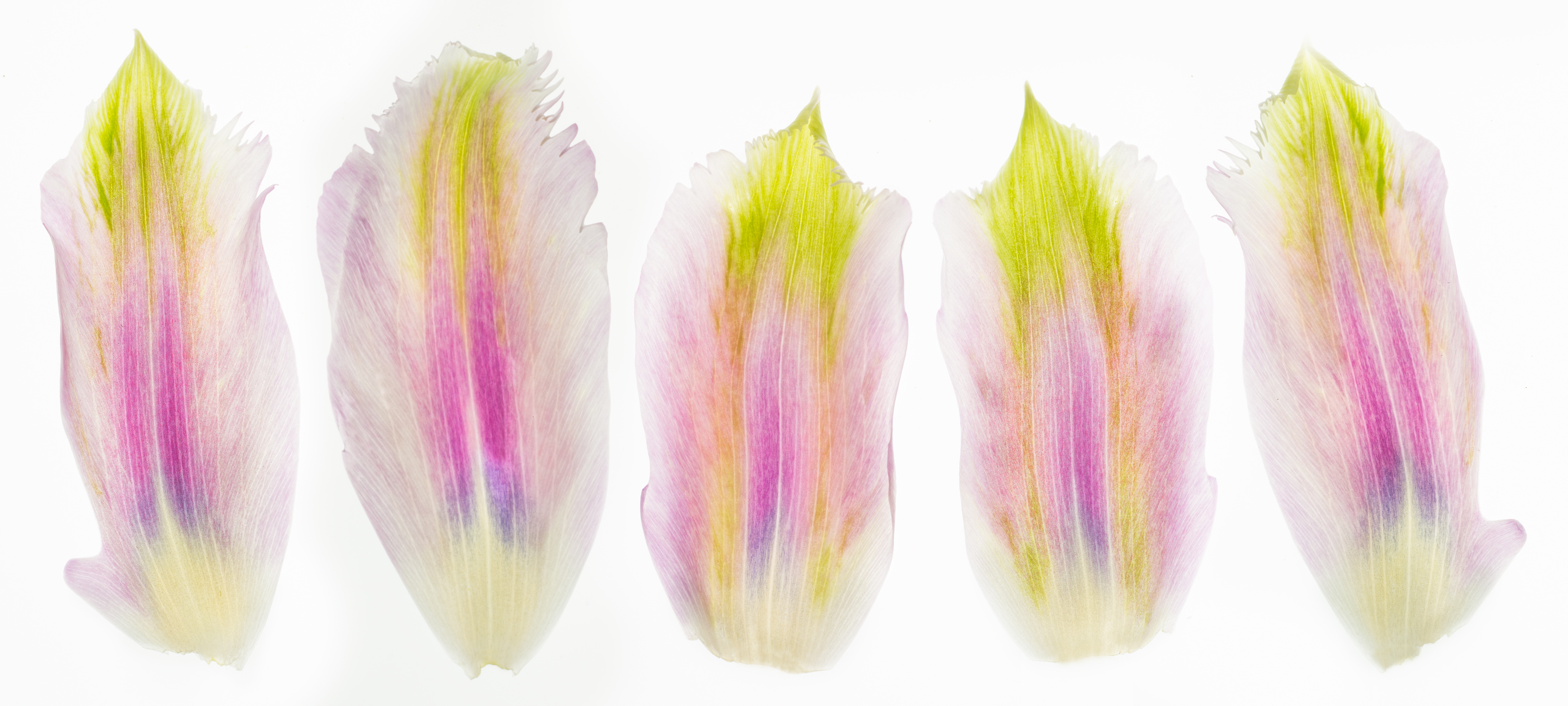Inspecting some pink tulips the other day, I noticed that the demarcation behind petals and leaves was not as clear as I had thought it would be. With this flower, the difference between the leaves and petals was gradual and a difference of degree rather than an absolute—the closer to the flower core the more petal-like it looked.

So some of these petals are leaves, and some of these leaves are petals. Be that as it may, and referring to all as petals, I noticed that the petals were wonderfully colorful when placed on the light box.
I photographed each of the five petals separately as a high-resolution vertical image, using a macro lens with an added extension tube to get sufficient magnification. I then combined the five horizontal images to make the single horizontal shown.
Obviously, this is a very high resolution file (although the reduced JPEG shown here may not give much sense of that). Putting it together in post-production strained the resources of my twin 6-core 128GB RAM high-end Mac.
You can view the image a bit larger by clicking here, or by clicking on the image itself.
My thought is to take advantage of the resolution, and make a really large print, perhaps twenty feet wide, which would let the viewer really see the details in the petals.
A triptych is a work of art divided in three sections, a tetraptych is a work of art in four sections, and a pentaptych is a work of art in five sections (the numerical prefixes come from the ancient Greek number words). So it seemed natural call my image Pentaptych of Tulip Petals—one “tych” for each of the five petals!